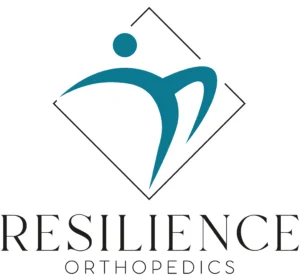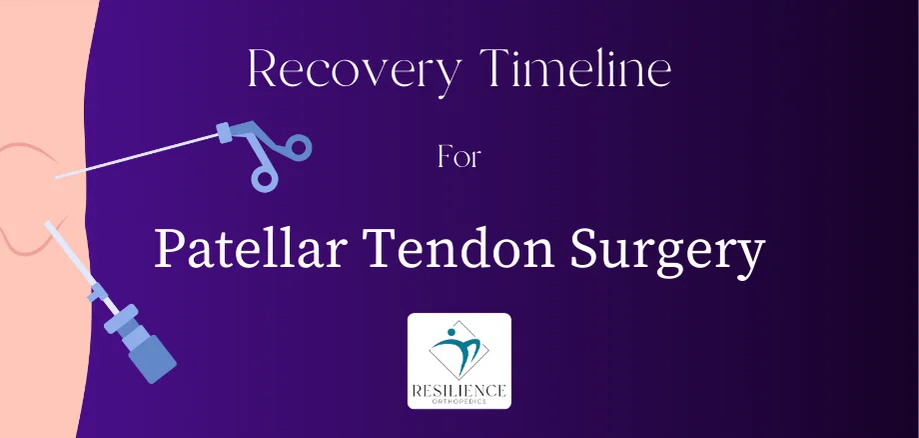Knee Replacement Surgery
Dr. Pamela Mehta, MD
Resilience Orthopedics, San Jose
Table of Contents
About Knee Replacement Surgery
Are you tired of having knee pain? Fed up with limited movement that prevents you from fully experiencing life? Well, help is at hand.
This in-depth guide will go into the realm of knee replacement. We will discuss this knee surgery that has improved the lives of many people. We can help you understand the procedure and its advantages. We’ll also talk about problems you may experience and the road to recovery.
Let’s learn how having a knee replacement can improve your life!
How is Knee Replacement Performed?
Knee replacement is a surgical procedure where we replace part of the knee joint. We also call this operation knee arthroplasty. The damaged parts of your joint is removed and replaced with a metal or plastic joint.
Knee replacement surgery is usually done under regional anesthesia. This means we only numb the area of the body being operated on.
We may also consider doing this under general anesthesia. This is where you are completely unconscious during the procedure. Your Anesthesiologist will discuss the options with you beforehand to create a treatment plan.
During the procedure, your surgeon will remove the damaged bone and cartilage within your knee joint. Following that, they will replace these parts with a prosthetic joint. These are artificial joints made of metal and plastic. This replacement closely resembles the motion of your knee.
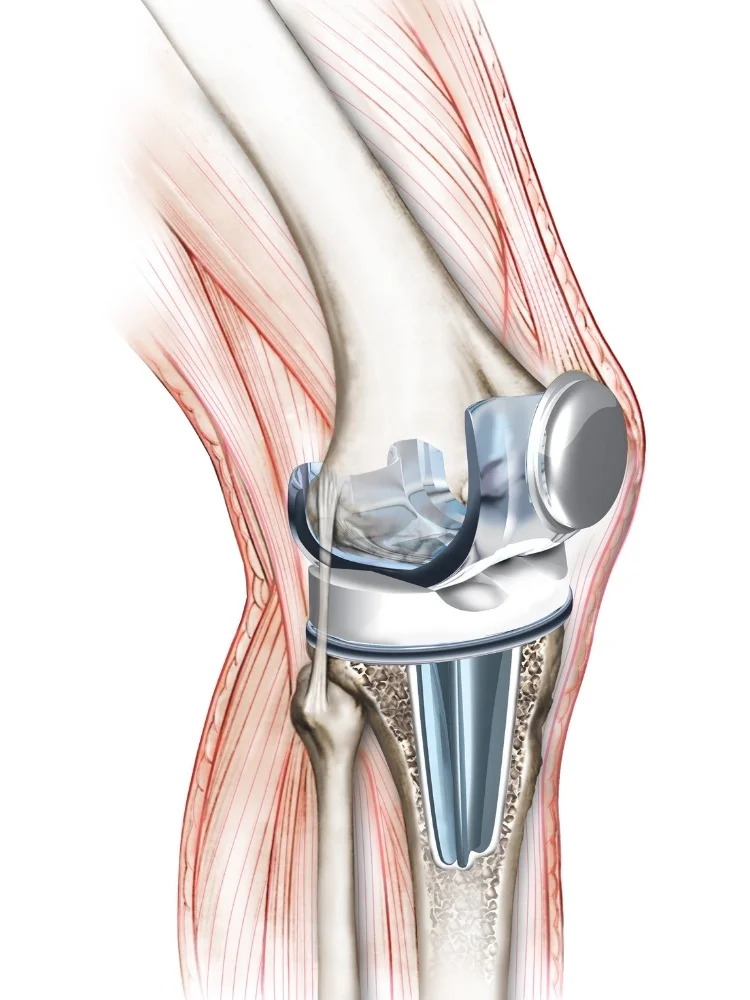
During the procedure, your surgeon will remove the damaged bone and cartilage within your knee joint. Following that, they will replace these parts with a prosthetic joint. These are artificial joints made of metal and plastic. This replacement closely resembles the motion of your knee.
This is a very common procedure that is usually uncomplicated, lasting a few hours. After the procedure, you will recover in hospital and be followed up once you’re discharged. Physical therapy and pain management techniques then help you regain strength and mobility. Before you know it, you’ll be on your way to a knee that feels brand new!
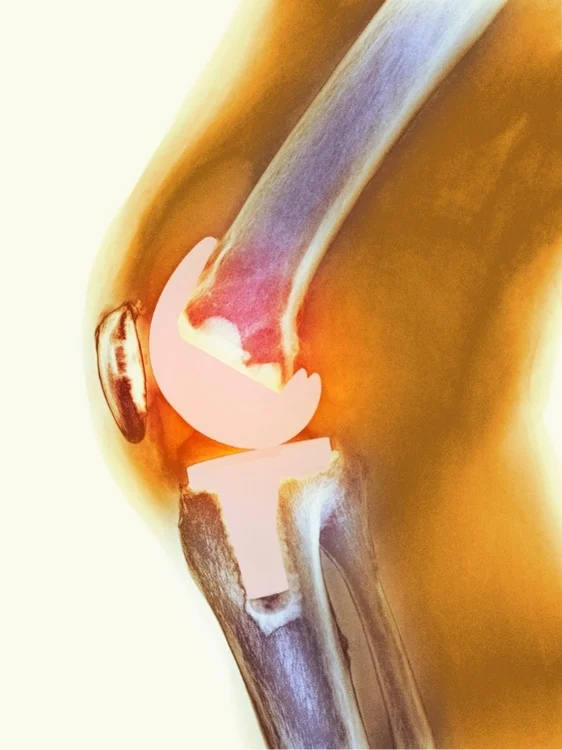
How Much Does Knee Replacement Cost?
We recognize that for many people, cost is a crucial factor. Several things can affect cost of knee replacement surgery including:
- Your location
- The hospital you select
- The surgeon’s costs
- The complexity of your case
- Whether you have insurance coverage
You can get a better sense of the costs involved by speaking to a member of our team. Rest assured that patients usually say that the cost was worth it. Knee replacement usually has huge long-term benefits in quality of life it provides.
Book a Consultation with Dr. Pamela Mehta, MD
The Best Knee Surgeon in San Jose
Dr. Mehta is a board-certified orthopedic surgeon who can help you recover from your knee condition.
We can help if you:
- Are Suffering From Pain and Mobility Issues
- Need Orthopedic Assessment and Advice
- Want Treatment From a Top Orthopedic Doctor
Advantages of Knee Replacement
It’s important to note that the specific benefits experienced can vary from person to person.
Your orthopedic doctor will assess your case, considering factors including:
- Your overall health
- Your lifestyle
- Severity of your joint problem
They will provide you with personalized guidance on the benefits you can expect. Here are some of the top benefits knee replacement patients report.
Effective Pain Relief
Relieving chronic knee pain is the most important benefit of knee replacement surgery.
Knee injuries, osteoarthritis, and rheumatoid arthritis can all result in chronic pain. This severely restricts your daily activities and quality of life.
Knee replacement surgery relieves pain and suffering by replacing the injured joint with an artificial one. This allows you to move around freely and without constant pain.
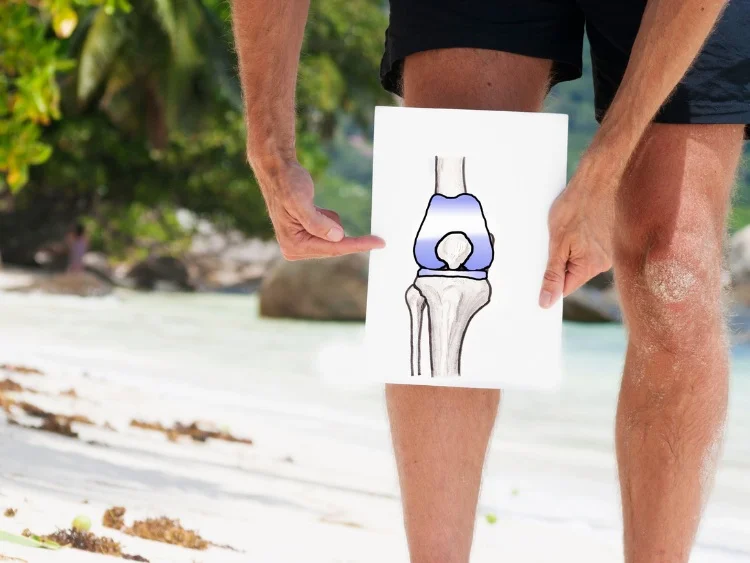
Increased Mobility and Function
Knee stiffness and pain make mobility and daily activities more difficult. Activities like walking, climbing stairs, or getting out of a chair might be affected. A successful knee replacement significantly increases your mobility and functionality. It can increase your capacity to:
- Walk without discomfort
- Climb stairs without difficulty
- Carry out tasks that were once difficult or impossible.
With your independence restored and renewed mobility, you can enjoy life with your new knee.
Enhanced Quality of Life
Knee replacement surgery has benefits that go far beyond physical enhancements. Your whole quality of life can change as knee pain lessens and mobility increases. You’ll have the opportunity to engage in activities you may have avoided due to pain, such as:
- Exercising
- Pursuing hobbies
- Traveling
- Enjoying time with loved ones
Knee replacement surgery can restore your zest for life, allowing you to enjoy each day to the fullest.

Increased Range of Motion
People with knee issues can struggle with stiffness and a restricted range of motion. The range of motion in your joint may be much improved after knee replacement surgery.
The new artificial joint is smooth and flexible. This gives you a better range of motion by replacing worn-out joint surfaces. You can take part in activities that call for bending, kneeling, or crouching.
Thanks to your enhanced flexibility, you can lead an active and satisfying lifestyle.
Improved Sleep and Mental Health
Chronic knee pain can disturb your sleep cycle. This results in weariness and sleep disorders, and can impact your mental health. Knee replacement surgery can enhance the quality of your sleep, leading to better rest and quality of life.
This is because it relieves pain and suffering. Your mental health also benefits from reduced pain and improved mobility. As you restore control over life, you’ll feel less stressed, more confident, and more optimistic.
Long-Lasting Results
With newer surgical methods, prosthetic joints have become more resilient and durable. A knee implant’s lifespan varies based on:
- Age
- Level of Activity
- Other health conditions
The majority of knee replacements can endure for 15-20 years or more. The joint’s longer lifespan lowers the need for further procedures or treatments. It’s important to note that the specific benefits experienced can vary from person to person.
Potential Complications of Knee Replacement
While knee replacement surgery has a high success rate, it carries potential risks. It’s crucial to be aware of these possibilities, although they are relatively rare. Some complications may include:
Infection
There is a slight risk of infection at the surgical site. Precautions are taken during the surgery to minimize this risk. Your healthcare team will monitor your progress to detect and treat any signs of infection.
Blood Clots
After the surgery, blood clots can form in the legs, potentially leading to deep vein thrombosis (DVT) or even pulmonary embolism (PE). Your surgeon will take preventive measures to minimize this risk, such as:
- Prescribing blood-thinning medications
- Using compression stockings
- Encouraging early mobility and
- Leg exercises to promote blood circulation

Implant Problems
Although rare, there is a small possibility of issues with the knee implant, such as:
- Implant loosening
- Dislocation
- Wear and tear over time
Regular check-ups with your surgeon are crucial to detect and address any complications. In some cases, further surgeries may be required to resolve implant-related issues.
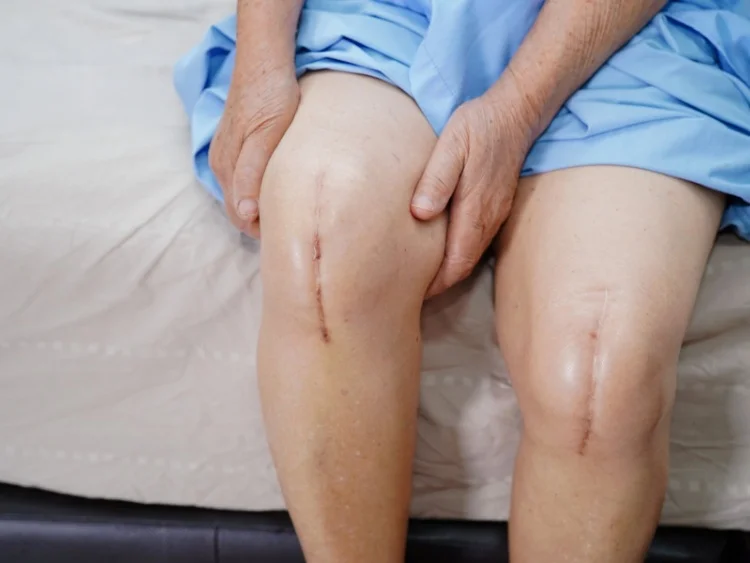
Nerve or Blood Vessel Damage
During the procedure, there is a small risk of damaging nearby nerves or blood vessels. Skilful surgeons take utmost care to cut these risks, but it’s important to be aware of the possibility.
Allergic Reactions
In rare cases, some individuals experience an allergic reaction to the materials used in the artificial joint.
Your medical team will take precautions before the surgery to cut the risk of allergic complications.
Recovery from Knee Replacement
Congratulations on successfully undergoing knee replacement surgery! If you want to make sure you stay on the path to a fully healed joint, check out our article on the top 5 mistakes after a knee replacement.
Now, let’s explore the recovery process and what you can expect:
Hospital Stay
Following the surgery, you will typically spend a few days in the hospital. During this time, your medical team will track your progress. We will manage pain and discomfort, and assist you in initiating physical therapy.
Physical Therapy
Physical therapy is a crucial part of your recovery journey. We will guide you through exercises and movements designed to strengthen your knee.
Following this exercise program will improve the range of motion and enhance stability. Your active participation during this phase is essential for recovery. By completing PT, your new knee will have the best chance to relieve pain and stiffness.
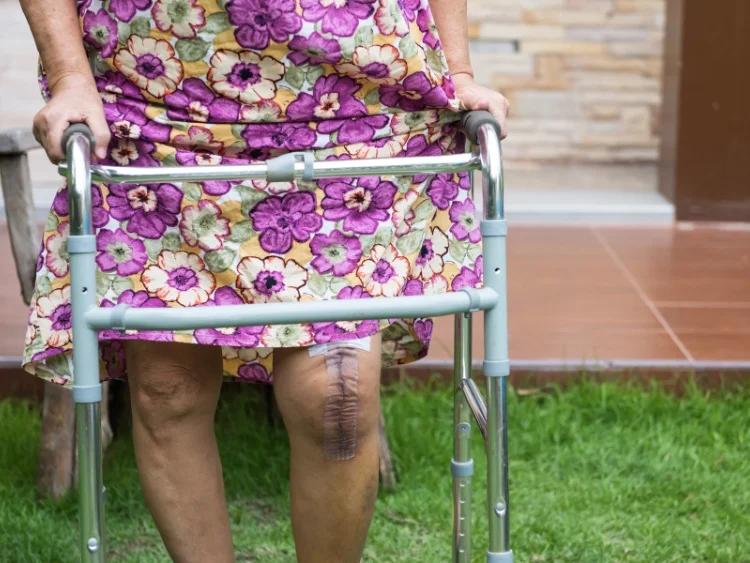
Pain Management
While some discomfort is normal during the initial stages of recovery, we will keep you as comfortable as possible. This may involve:
- Medication
- Cold treatments to your knee
- Assistive devices such as crutches or walkers.
Patience and Persistence
Recovery from knee replacement requires time, patience, and perseverance. It’s important to listen to your body.
Respect your limitations and follow the rehabilitation plan prescribed by your healthcare team. Some days may be challenging, but with persistence and determination, you’ll make progress toward a full recovery.
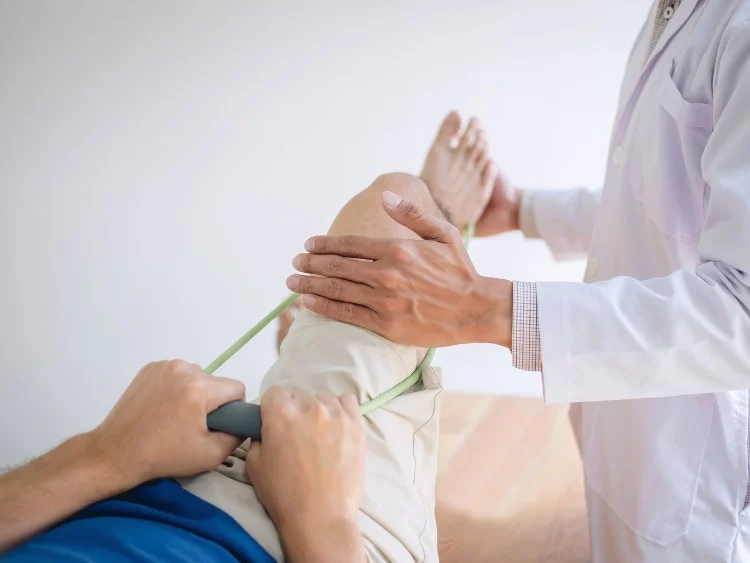
Home Care and Assistance
Once you’re discharged from the hospital, you’ll need to continue your recovery at home. It’s important to create a safe and supportive environment at home. Remove trip hazards and arrange assistive devices if needed. You may also need help from a family member or caregiver during the initial stages of recovery.
Gradual Return to Normal Activities
As you progress you’ll slowly regain the ability to perform daily activities. However, it’s crucial to follow your surgeon’s and physical therapist’s guidance. Pay attention to advice on weight-bearing, exercise intensity, and activity limitations. Over time, you’ll regain strength, allowing you to resume your favorite activities.
Follow-up Appointments
Your healthcare team will schedule follow-up appointments to check your progress after surgery. At these appointments, they can make any necessary adjustments to your treatment plan.
This is also an opportunity to address any concerns you have. Your doctor will assess the new joint and ensure that you’re on track for a successful recovery.
Long-term Rehabilitation
While you may feel improvements in the first few months, full recovery can take several months to a year. It’s important to maintain a consistent routine of physical therapy exercises.
Even when the joint starts to better, you should follow your surgeon’s advice. Your doctor’s guidance will help you gradually increase the intensity of your activities.
What Knee Services Do We Offer?
Knee Pain Assessment
Knee pain can make moving around incredibly frustrating, interrupting your daily activities and making your life difficult. Dr. Mehta is a knee doctor and can offer various knee pain treatments.
Knee Surgery
If your knee condition is severe, or nothing you have tried has helped, Dr. Mehta can advise you on the options for surgery. She is a knee specialist and can offer expert opinion and care.
Treatment of Knee Conditions
ACL Tear
ACL tears are usually the result of sports injuries and may require surgery.
Patellar Tendon Tear
The patellar tendon connects your patella to your shinbone, and tears of this make movement difficult.
Meniscus Tear
A meniscus tear is a rupture of the cartilage in your knee joint causes difficulty moving.
Knee Arthritis
Knee arthritis is a common and painful condition that often requires a knee replacement.
And Many More!
Dr. Mehta offers diagnosis and treatment of all knee conditions and can offer her specialist opinion as an expert knee doctor.
Call Us On 408-559-3888
or Send a Message.
